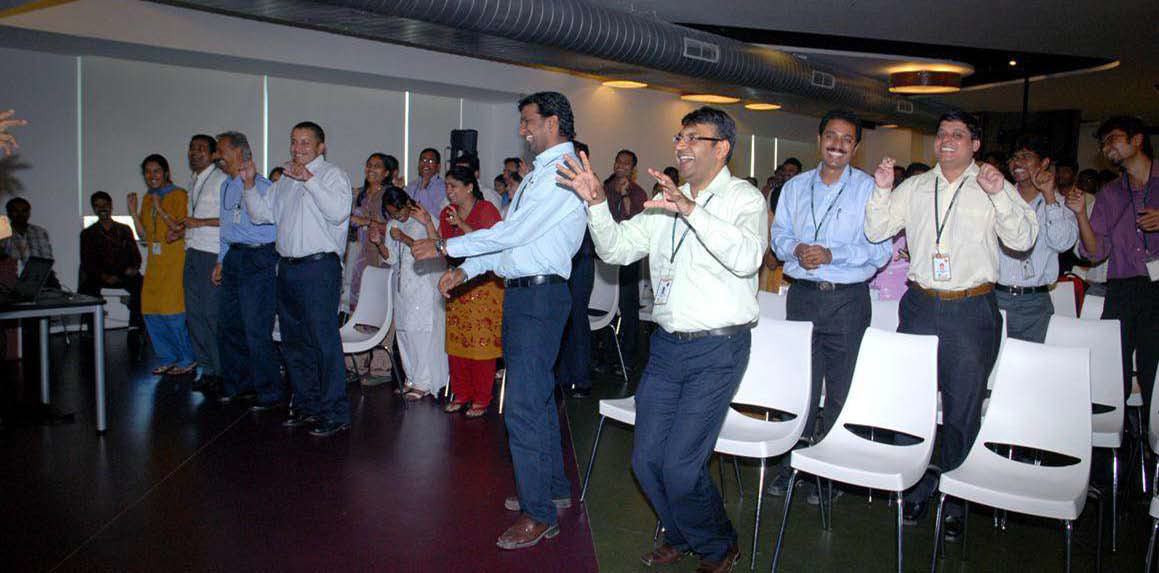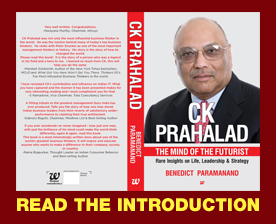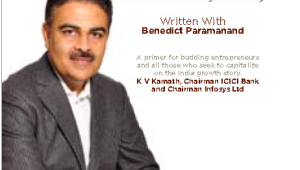Kumar Sachidanandam, Senior Director – Innovation Group at Cognizant Technology Solutions, demystifies innovation to his team so that they get inspired, not overwhelmed. Excerpts from his recent talk at IIM Bangalore on the occasion of the launch of Rishikesha T. Krishnan and Vinay Dabholkar’s book, 8 Steps to Innovation
When I left Microsoft, I wrote a mail to Ravi Venkatesan, chairman, Microsoft India, about my move. He wrote back: “You are a smart, angry young man and you will do very well wherever you go.” I was thinking I am going to Cognizant to innovate and find some solutions. Honestly, that was the reason I left Microsoft. When I came to Cognizant, the company said it knew my credentials. The company’s mandate was: “We want every employee in Cognizant to innovate”. At that point, I almost told Ravi I wanted to come back. Looking back, glad I stayed on with Cognizant and pursued my passion for innovation.
We had a different problem at Cognizant. We recruit top engineers from several premier engineering colleges across India. When you ask them, “Tell me honestly how many of you are creative and innovative?” Usually 20% raise their hands. When you ask them, “Are you sure?” You see few more hands down. At the end of the day, only 10% would agree they are creative and innovative. What do you do then? That was the first problem our team faced. It was not about making people innovative, but about making people believe that they can innovate, that they have ideas, and that their ideas are important.
The problem stems from the very definition of innovation. Innovation doesn’t mean that it has to be an iPhone or an iPad, the next big thing. However, for senior leaders, the perspectives of the world and business are different. They would ask: “What’s the next big thing that will take the company forward?” At the same time, for a moment, think about the people at the bottom who are writing code, making calls, and serving customers; they think differently of innovation. The definition of innovation has to be fine-tuned. We said your ideas are as important and innovation is not about big breakthroughs alone; it’s something that you can do within your scope of work, thereby increasing their “Creative Confidence”.
When I was in Microsoft, once in every three years we released a new product. So in the year one, we release the product; after 6 months, we wait for the product to settle, and then we sit at the drawing board and make plans for the next product release. Our company is different; we don’t make products. At Cognizant, we can’t comfortably sit and think. We are in the services business and deliver services for our customers, hundreds of them. So we took an approach of evangelizing, talking about what innovation is. It really did not work, so we stopped talking about the definition of innovation. Because, each of our customers have their own definition of innovation, depending on where they are and what they do. Innovation is important, but you got to do innovation within your scope, that’s the fundamental premise. How do you develop innovation capabilities? We call our employees as associates. These associates are engineers; they know what they are doing. For example, I was an engineer when I left Microsoft. An engineer has the mindset of a solutions generator, an idea generator.
That’s why we thought it was important to get people to think differently. There is a saying, “Anything that is white is not milk” and another one, “If you drink milk under the palm tree, people will think you are drinking toddy.” That’s an innovators’ mindset. Typically, when I see a problem, I straightaway get to the ideation mode. The moment I see something white, I think that’s milk. That’s how the solution mindset works.
How do you make people to step back and think a little differently?
If you look at your mind, it is sequential in its working. It doesn’t think in a parallel manner; Research has proven none of us can multi-task. However, when you get a problem, your mind goes all over the place.How do you teach them a structured approach? For example, the “Six Thinking Hats” tool helps you to get your mind to focus on the first aspect and sequentially thereafter. Once you learn to focus on a specific dimension, you start seeing the big problem. There are tons of such innovation tools. So why not teach some of these tools that our associates could take back and experiment with.
We came up with a program called “Innovation Capability Building Program”. It brings together a bunch of people who are passionate, have energy, and have the potential to grow in the organization. It is a two-day workshop. It starts with why you need to innovate, why you are innovative. We also talk about barriers too. What are the barriers to people innovating? Every time it’s the same answers: I am not creative, no time, no encouragement, fear of failure. It’s not that people don’t want to innovate. We took steps to removing those barriers.
We have more than 160,000 people in our organization. You just can’t use manual mechanisms to collate and process ideas. We use platforms and provide demo and training on how to use them.
Measuring innovation
Measuring innovation is complex and very hazy topic. But if you go to business leaders, they are going to say there is no time to think, it’s got to be done; it’s got to be hitting their top line or bottom line. Otherwise it’s not innovation. It’s like I want a mango, but I don’t have time have to plant the seed, water it, and nourish it to get one.
Corporates are full of dashboards and metrics. It is death by numbers, especially for middle management. In the fitness world, it is mind, body and endurance. You can’t have fitness without these three. We need to focus on all three to succeed.
In the same way, innovation programs can’t just focus on impact or output. When you do a few things right, innovation will automatically fall into place.
The way we measure innovation is through a very simple mechanism called “innovation index.” The index has three parts. One is “innovation input”. What is an input for creating innovation culture in an organization? What is it that we are doing? Are we educating people about innovation? How can they be innovative? Are we giving them the required tools and techniques? Do we have those innovation evangelists across the organization?
Once you have people ready and capable, “innovation process” is the next part. How many problems are you throwing in front of your people? How many of them rise to the challenge? How many contribute ideas? Typically, it could be just one blue-eyed boy/girl. Is that the way you want it or do you want everybody to contribute? We don’t have a committee that evaluates these ideas; we let the employees choose the best ideas by “Crowd Rating”. The last part of the index is “innovation output.” It is about the number of innovations implemented and the impact of these innovations in dollar terms.
We shared all that we did as an article in the “Innovating Innovation Challenge” and you can read our award winning innovation journey here:
http://www.managementexchange. com/story/managed-innovationoxymoron












Recent Comments